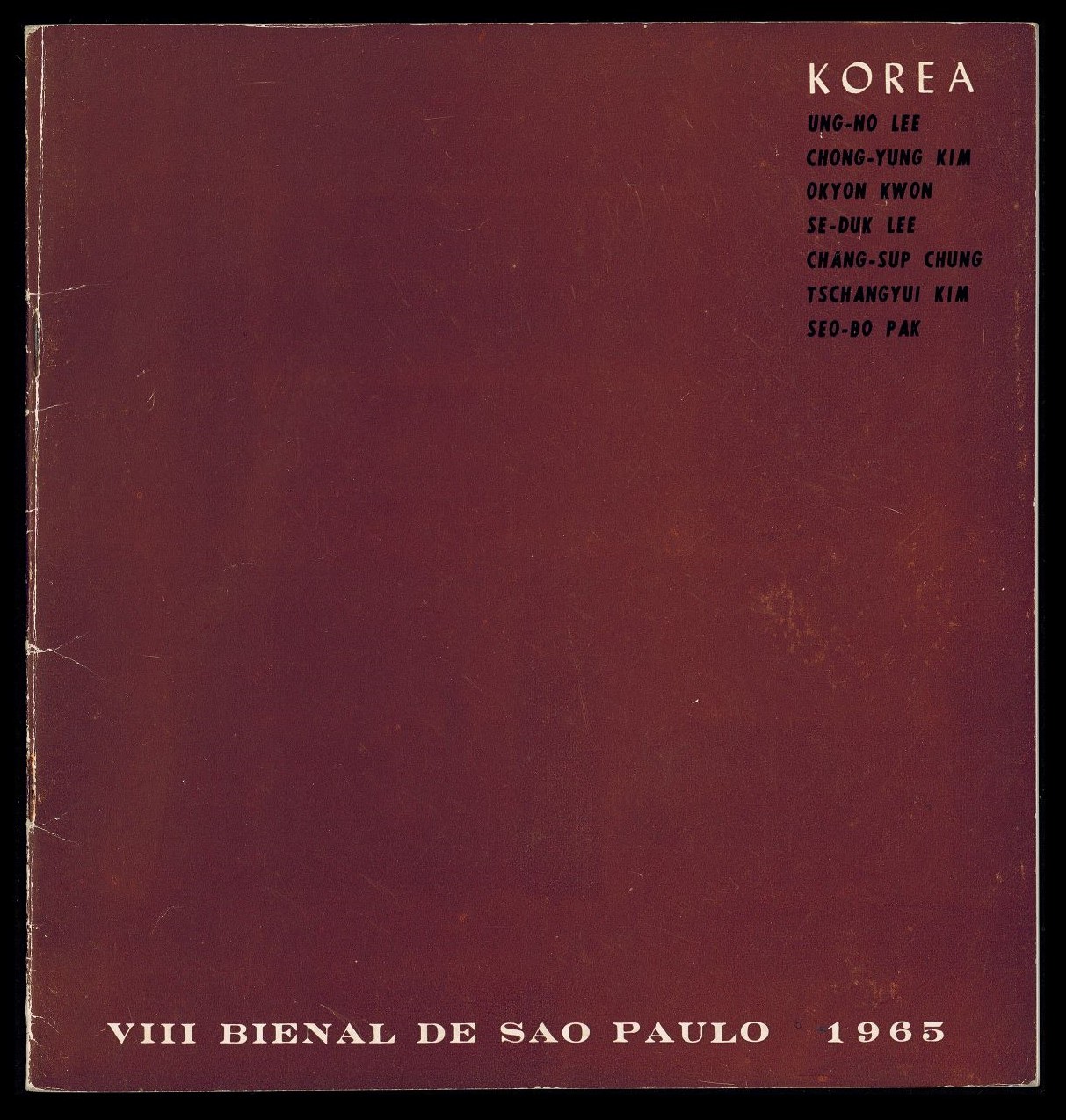
Eighth Sao Paulo Art Biennial, Brochure, 1965, MMCA Art Research Center Collection
Sao Paulo Art Biennial
* Source: Multilingual Glossary of Korean Art. Korea Arts Management Service
Related
-

Korean Information Service Gallery
A gallery established in 1957 in Sogong-dong, Seoul. The parent organization of the gallery was the Office of Public Information. The gallery moved to a temporary building in the Northeast section of Deokusung in 1968. The Korean Information Service Gallery was originally a facility where a diverse range of exhibitions including art, crafts, and photography could be held for free, but changes in the Korean Information Service’s policy led the building to be used only for the promotion of government policies starting in April 1972. When the National Museum of Modern Art, Korea (now MMCA) moved to Deosukung Palace in 1973, this branch of the National Museum assumed the role of the Korean Information Service Gallery.
-
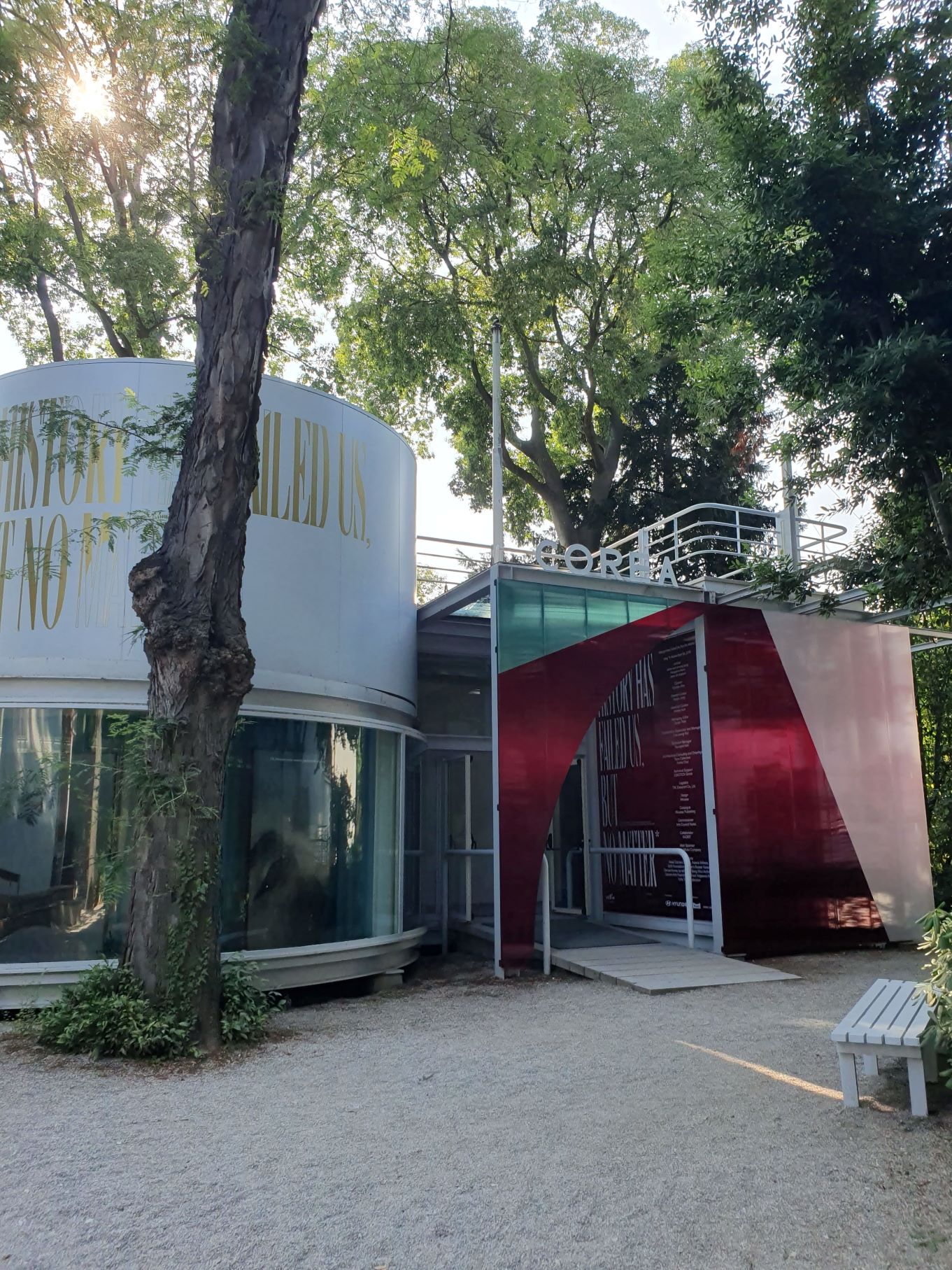
Venice Biennale Korean Pavilion
The Venice Biennale is an international art festival that began in 1895, and the Korean Pavilion opened in 1995 as the 26th national pavilion. The establishment of the Korean Pavilion was the result of government-level support, corporate donations, and the activism of artists after Paik Nam June’s work was exhibited in the German Pavilion and won the Golden Lion Award. The Pavilion was allocated space in Castello between the German and Japanese Pavilions. It was built primarily of glass and metal and based on the design of architect Kim Seokchul.
-

Korean Artists Association
An artist association formed in 1955. The core of the association comprised faculty members of the Seoul National University College of Fine Arts. The election of Ko Huidong as the chairman of the Great Korean Art Association (Daehan misul hyeophoe) despite his failure to win the majority vote led the supporters of Chang Louis Pal to leave the association and form the Korea Artists Association. Chang Louis Pal, the first chair, created the photography division, which was absent from the Great Korean Art Association Exhibition, and the architecture division. He also reinstituted the calligraphy division, which had been closed. At the time of establishment, the stated ideology of the association was four-fold: to develop and improve national culture through progressive ideology; to maintain purity of attitude toward the creation and the presentation of art; to actively support the work of new generations; and to achieve, without delay international partnerships with other artists groups and organizations around the world. In 1961, the association was merged into the Korean Fine Arts Association alongside the Great Korean Art Association due to the government policy of consolidating art organizations.
Find More
-
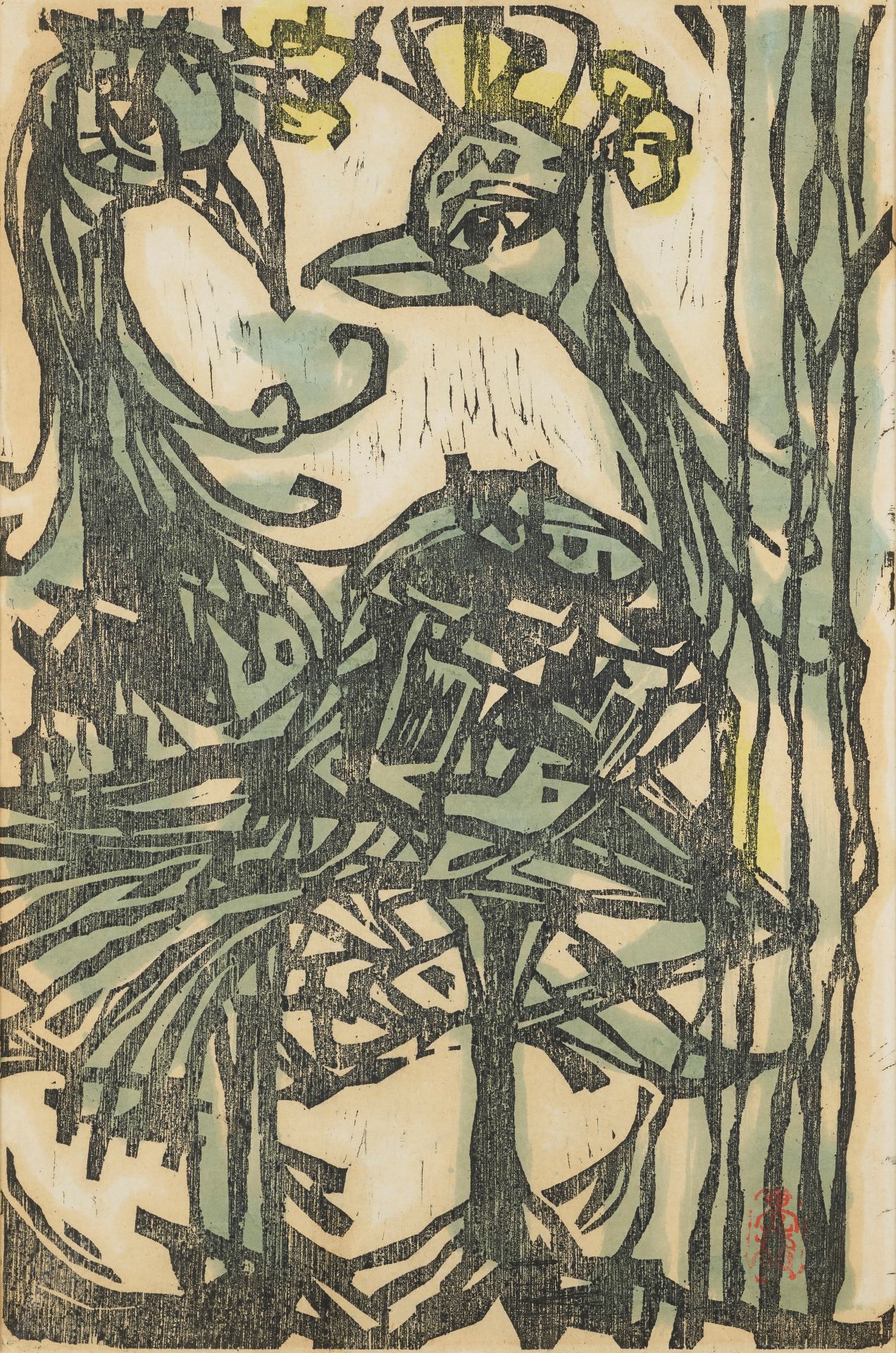
Yoo Kangyul
Yoo Kangyul(1920-1976) was a Korean printmaker and dye craftsman who engaged in diverse activities from the late 1940s through the early 1960s. He entered the Azabu Middle School in Tokyo in 1933 and graduated from the Craft and Design Department at Nihon Art School in 1944. In 1941, while studying in Japan, Yoo’s work was selected for the Japanese Craftspeople Association Exhibition. He received apprenticeship education on dyeing at the Saito Craft Institute. After returning to Korea, Yoo worked as a principal lecturer and researcher at Lacquerware Inlaid with Mother-of-Pearl Training Center and Korean Plastic Arts and Culture Research Institute. In 1958, he received Rockefeller Foundation scholarship to study printmaking at New York University and the Pratt-Contemporaries Graphic Art Centre. He was later appointed as a professor at Hongik University and served until 1976. He was also active as an architectural advisor and interior designer. Among his notable works are the exhibition design for Anti-Communist Exhibition Hall of the Freedom Center (1966) and the Ceramic Mural for the National Assembly (1974). Yoo Kangyul founded the Korean Contemporary Printmaker Association [Hanguk hyeondae panhwaga hyeophoe] in 1968 to develop Korean printmaking. Moreover, he served as a judge of the Korean Art Grand Award Exhibition in 1969, a standing committee member for the construction of the National Museum of Korea in 1970, and a head judge for the National Tourist Folk Art Competition from 1971 to 1976. He won many awards including the Minister of Education Award (1953) and the Prime Minister Award (1954) at the National Art Exhibition (Gukjeon) and a presidential prize for the interior design of the National Museum of Korea (1970). Yoo did not hold a solo exhibition during his lifetime, but in 1978 Kyang Yul Yoo’s Exhibition was organized by his students and the National Museum of Modern Art, Korea (now MMCA). In 1981, Collection of Works by Yoo Kangyul was published. In 2000, his bereaved family donated Yoo’s collection to the MMCA and the National Museum of Korea.
-
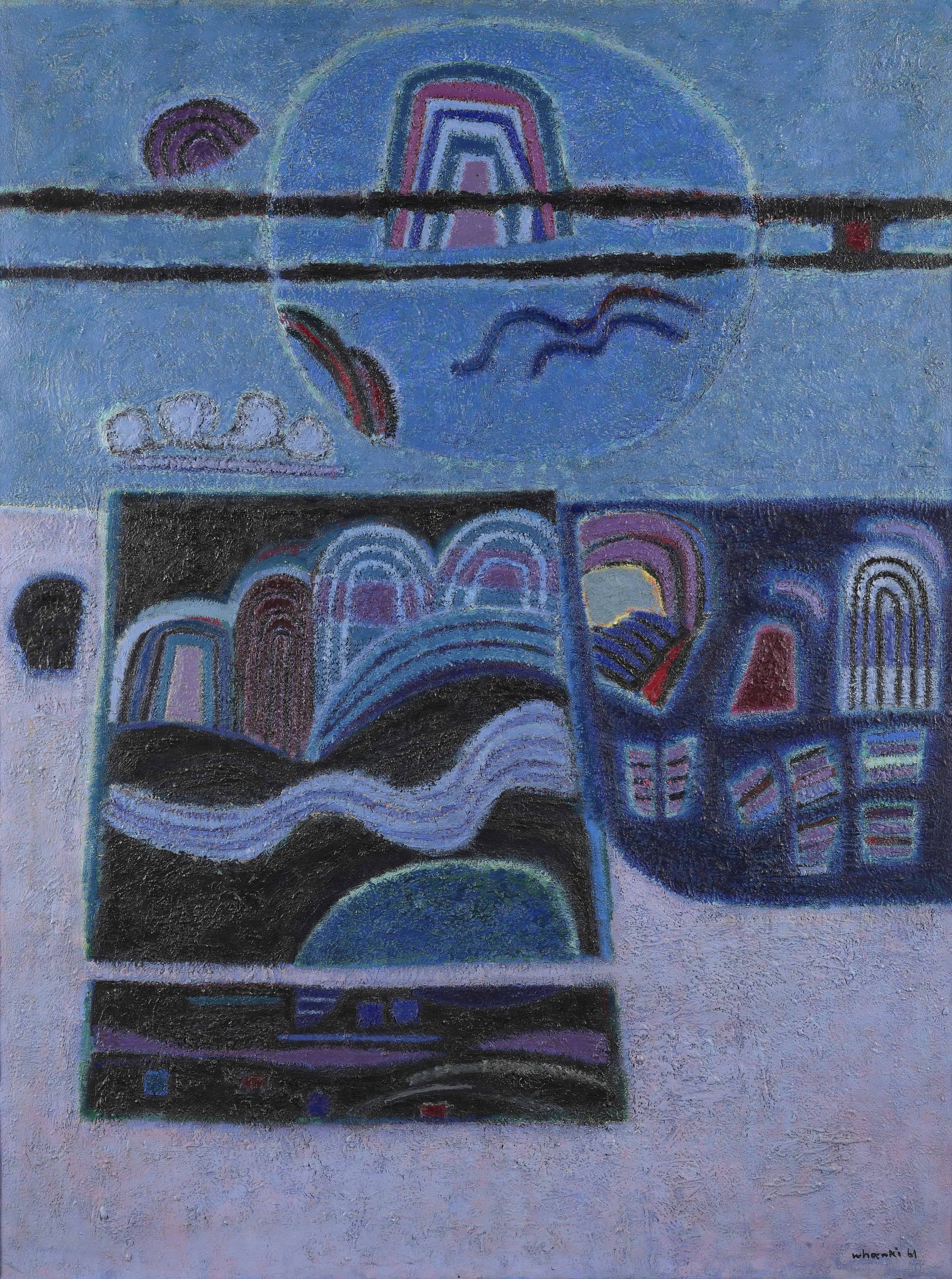
Kim Whanki
Kim Whanki (1913-1974, pen name Suhwa) was born in Sinan, Jeollanamdo, and his family origin was from Gimhae. He studied at the Department of Fine Arts at Nihon University, Tokyo, Japan from 1933 to 1936. He joined the Avant-Garde Western Art Institute in 1934 and submitted his work to Avant-Garde art associations, such as the Second Division Exhibition Nikaten (Nika Art Exhibition) and the Exhibition of the Free Artists Association (Jiyu Bijutsuka Kyokai). After independence, he organized the New Realism Group and worked as a professor in the Department of Fine Art at Seoul National University (1946-1950) and Hongik University (1952-55). He lived in Paris from 1956 to 1959, and after his return, he became a professor and later the Dean of the Fine Art College at Hongik University (1959-1963). He participated in the seventh Sao Paulo Biennale and won an honorary award, and then moved to New York. He abruptly passed away while having a solo exhibition at Poindexter Gallery, New York, ironically when his career in the US was at its peak. As a pioneer of Korean abstract art, he started by working in geometric abstraction and moved on to semi-abstract work that featured natural motifs such as the mountain, the moon, and the river. After moving to the U.S., he returned to abstraction with his so-called "dot paintings." His painting 16-Ⅳ-70 #166 Where, in What Form, Shall We Meet Again? (1970), was awarded a grand prize at the Korean Art Grand Award Exhibition and has inspired many contemporary Korean artists. His work Rondo (1938) was selected as No. 535 within the national Registered Cultural Properties.
-
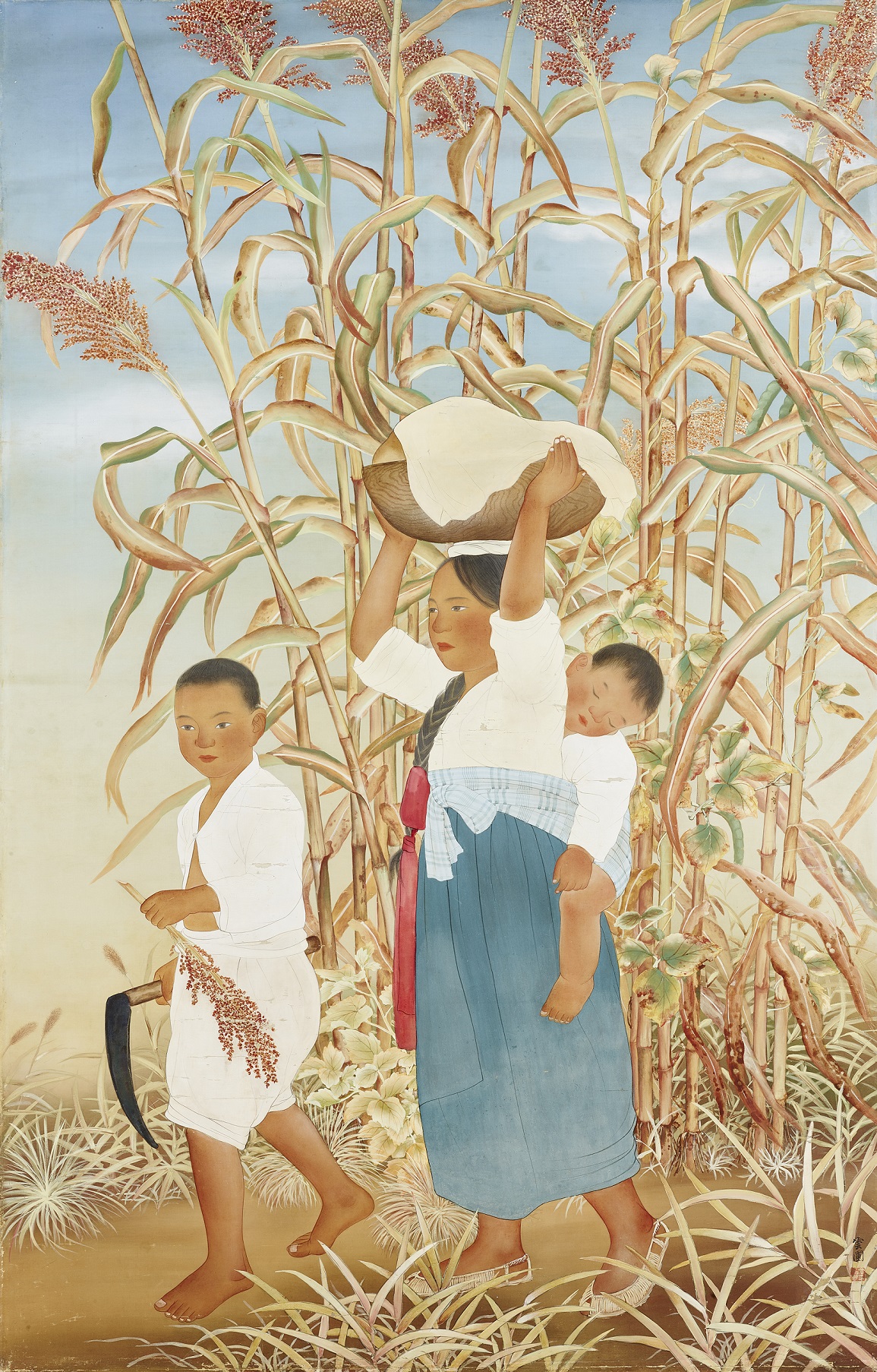
Kim Kichang
Kim Kichang (1913-2001, pen name Unpo or Unbo) studied Eastern painting at Kim Eunho’s art studio Nakcheongheon. After his debut in the tenth Joseon Art Exhibition [Joseon misul jeollamhoe] in 1931, he won special selections from 1937 to 1940, and became a renowned painter. He was appointed as the first president of Paek Yang Painting Association and became a professor at Hongik University and Soodo Women's Teachers College. He was awarded the Order of Civil Merit, Peony Medal in 1981 and the Korean Art Academy Award in 1983. After he passed away in 2001, he was awarded a posthumous Geumgwan Order of Culture Merit award. Although Kim initially focused on colorful figure paintings, following in the legacy of his mentor Kim Eunho, in his later career he collaborated with his wife Park Rehyun to modernize Korean painting by adopting cubism and abstraction. He reinterpreted traditional folk paintings in his representative works, such as Blue-green Landscape Painting series started in the 1970s and his Fool’s Landscape Painting in the 1980s and was inspired by portraits of historical figures. He contributed to the development of Korean modern art by working in an expanded formal territory from figuration to abstraction and addressing subject matter from folk painting, to figure and landscape painting.






